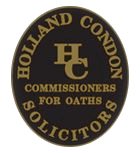SOURCES OF IRISH LAW =
- Irish Constitution 1937;
- Legislation (Primary & Secondary Legislation);
- E.U. Law;
- Case Law (known as judicial precedent);
~ Irish Constitution 1937
- Bunreacht na hEireann; 50 Articles in it;
- Primary source of Law in Ireland;
- Higher status than any other domestic law;
- All Laws must comply with the standards set out in the Constitution = all domestic laws must not conflict as otherwise they are unconstitutional;
- Establishes Organs of the State and describes how they are to run = 3 Organs =
- President & Oireachtas (Parliament) = power to enact legislation. Dail Eireann & Seanad Eireann & President;
- The Government = Executive Power of State is held by it. The power to implement the Legislation;
- The Courts = judicial power to interpret and apply the Law.
- Democracy require this “Separation of Powers” so each acts as a check on the other. “Power tends to corrupt, and absolute power corrupts absolutely” = Lord Acton.
- Lists Fundamental Rights & Freedoms e.g. equality before the Law, right to education; to life, to travel, to personal liberty, to property;
- Change Constitution by Referendum.
~ Legislation
- Houses of the Oireachtas have sole power of making Laws (Article 15 Bunreacht);
- Must comply with Constitution;
- Legislature = Oireachtas = Parliament (i.e. same meanings);
- Primary Legislation: –
- Enacted by Oireachtas;
- Draft Legislation = Bill e.g. Finance Bill goes through 5 stages in Oireachtas;
- When passed, signed by President and becomes an Act e.g. Finance Act; or President refers to Supreme Court if concerned with Constitutionality;
- Dail à Seanad à President;
- (1) Public Acts + (2) Private Acts. (1) = General and (2) = Specific;
- Acts can introduce new law; amend laws or consolidate Law where lots of Acts over years;
- Act = Legislation = Statute (i.e. same meanings).
- Secondary Legislation: –
- Subordinate or Delegated Legislation to Minister, Local Authorities etc.;
- Forms it takes = *Orders ( =directions); *Rules (=guidelines); *Statutory Instruments (=give effect to statutory provisions); *Regulations (=explaining Acts); *Bye-Laws (=regulate particular area); *Schemes (=rules for fees)
- Doesn’t come before the Dail;
- Advantage = allows for speed;
- Disadvantage = too much Law made in this way and no publicity about it;
- Rules governing delegated legislation = (a) must be Constitutional, and (b) Body who has the Power (e.g. Minister) must use it intra vires and not ultra vires.
~ Case Law (Judicial Precedent)
- Ireland is Common Law System = a legal system that recognises case law as capable of establishing Laws;
- Decisions made by Judges = case law = Judge made law but only if no legislation enacted covering the area;
- History = Brehon Law was overtaken after 1014 and 1066; Normans had unwritten customs; then came the British established unified Laws around empire “Common laws everywhere” (16th century); apply by Judges; become too rigid = unfair, so Law of Equity developed culminating in Judicature Act which merged equity and Common Law;
- Cases establish a principle of law which is followed in subsequent cases = Precedent. Must be followed by Lower Courts. This is known as Doctrine of “Stare Decisis”=Stand by your decision.
- A Court decision is divided into “Ratio Decidendi” (reason for deciding) and “Obiter Dictum”=(something by the way). Former is binding and latter is of great influence;
- Advantages of Precedent as source of law = consistency; certainty and efficiency. Disadvantages = vast numbers of cases; inflexible at times; can result in unfairness.
~ European Law
- Takes precedence/superior over national law and the Constitution (see intro in your manual);
- Our Constitution allows for EU Law;
- Sources of EU Law: –
- Primary Legislation – the Treaties; List them please
- Sets out broad objectives of EU – gives and establishes EU Institutions and their powers;
- Secondary Legislation – which are
- Regulations = immediate Law and binding on all and directly applies in each State. Give example;
- Directives = EU cant interfere in every area of Domestic Law (e.g. minimum wage) so these are instructions to member States to enact Law to meet an EU objective. Time limit to enact and if not, be fined and a directive can have direct effect.
- Decisions – Bind those who are addressed;
- Recommendations & Opinions
~ EU Institutions
- Original Objective of E.E.C. = Free movement of goods, people and capital with a common external barrier;
- Democracy require Separation of Powers so EU has number of Institutions
| The European Commission |
|
| The Council of MinistersSupreme Legislative Body |
|
| The European Council |
|
| European Parliament |
|
| European Court of Justice |
|
| Court of First Instance |
|
| Court of Auditors |
|
Structure & Jurisdiction of our Courts
- Justice is to be administered by the Courts = Constitution
- Courts structure is hierarchial = starts with low Court going upwards
- Two separate Court structures = (1) Civil & (2) Criminal
- Each Court has been given certain Jurisdiction = it’s authority (or no authority) to hear a particular case. Jurisdiction depends on location (of parties, the crime, the wrongful act); amounts of money at issue; seriousness of the case/crime; and the nature of the law involved. Minor matters dealt with in the District Court and as they get more serious, the cases go up to another Court level
- “Court of First Instance” = cases can start in this Court
- “Court of Appellate Jurisdiction” = has power to hear appeals
- “Summary Offence” = minor crime that can be dealt with by a Judge alone
- “Indictable Offence” = serious offence that can be dealt with by Judge and/or Jury
- “Arraignment” = accused asked to say if they are guilty or not guilty
- “Bring an Action” = civil; “Bring a prosecution” = criminal




